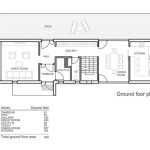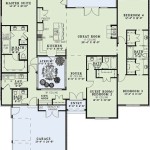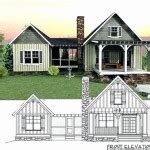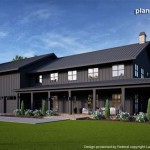Creating house plans is the process of designing a home on paper, outlining its structure, layout, and appearance. These plans are essential for guiding the construction of a new home or renovating an existing one.
House plans provide a detailed blueprint for contractors, ensuring that the home is built according to the architect’s vision and meets building codes. They include precise measurements, specifications for materials, and detailed drawings of every room, floor, and elevation.
In this article, we will delve into the various aspects of creating house plans, including:
When creating house plans, it is important to consider the following 10 key points:
- Define the scope and budget
- Choose a design style
- Determine the number of rooms and their sizes
- Plan the layout for functionality and flow
- Consider energy efficiency and sustainability
- Comply with building codes and regulations
- Obtain necessary permits and approvals
- Hire a qualified contractor
- Review and revise plans as needed
- Create detailed construction documents
By following these steps, you can ensure that your house plans are comprehensive, accurate, and meet your specific needs and requirements.
Define the scope and budget
The first step in creating house plans is to define the scope and budget of your project. This involves determining the following:
- The size and type of home you want. Consider the number of bedrooms, bathrooms, and other rooms you need, as well as the overall square footage and style of the home.
- The location of your home. The cost of land and construction can vary significantly depending on the location, so it is important to factor this into your budget.
- The materials and finishes you want to use. The cost of materials and finishes can also vary significantly, so it is important to set a budget for these items early on.
- The timeline for your project. Building a home can take several months or even years, so it is important to set a realistic timeline for your project and factor in the cost of financing during that time.
Once you have defined the scope and budget of your project, you can begin to develop your house plans. It is important to work with a qualified architect or designer to ensure that your plans are accurate and meet all building codes and regulations.
Choose a design style
The design style of your home is a reflection of your personal taste and preferences. There are many different design styles to choose from, so it is important to take some time to research your options and find a style that you love. Some of the most popular design styles include:
- Traditional: Traditional homes are characterized by their symmetrical facades, pitched roofs, and use of natural materials such as brick, stone, and wood.
- Contemporary: Contemporary homes are characterized by their clean lines, open floor plans, and use of modern materials such as glass, steel, and concrete.
- Modern: Modern homes are characterized by their simple forms, flat roofs, and use of large windows.
- Craftsman: Craftsman homes are characterized by their exposed beams, built-in cabinetry, and use of natural materials such as wood and stone.
- Mediterranean: Mediterranean homes are characterized by their stucco walls, tile roofs, and wrought-iron balconies.
- Tuscan: Tuscan homes are characterized by their stone facades, arched doorways, and terra cotta roofs.
- French Country: French Country homes are characterized by their steeply pitched roofs, dormer windows, and use of stone and brick.
- Colonial: Colonial homes are characterized by their symmetrical facades, clapboard siding, and use of brick or stone chimneys.
- Victorian: Victorian homes are characterized by their elaborate gingerbread trim, bay windows, and turrets.
- Cape Cod: Cape Cod homes are characterized by their simple rectangular shape, shingled exterior, and central chimney.
Once you have chosen a design style, you can begin to develop your house plans. It is important to work with a qualified architect or designer to ensure that your plans are accurate and meet all building codes and regulations.
In addition to the, there are also many other design styles to choose from. When choosing a design style, it is important to consider your personal taste, the location of your home, and the budget for your project.
Determine the number of rooms and their sizes
The number of rooms and their sizes are two of the most important factors to consider when creating house plans. The number of rooms will depend on the size of your family and your lifestyle. The sizes of the rooms will depend on how you plan to use them.
Here are some things to consider when determining the number of rooms and their sizes:
- The number of bedrooms you need. This will depend on the size of your family and how many guests you typically have.
- The number of bathrooms you need. This will depend on the number of bedrooms you have and how many people will be living in the home.
- The size of the kitchen. The kitchen is one of the most important rooms in the home, so it is important to make sure it is large enough to accommodate your needs.
- The size of the living room. The living room is another important room in the home, so it is important to make sure it is large enough to accommodate your furniture and your family and guests.
- The size of the dining room. The dining room is used for eating meals, so it is important to make sure it is large enough to accommodate your dining table and chairs.
- The size of the family room. The family room is a more casual space than the living room, so it can be smaller. However, it is important to make sure it is large enough to accommodate your family and guests.
Once you have considered all of these factors, you can begin to determine the number of rooms and their sizes. It is important to work with a qualified architect or designer to ensure that your plans are accurate and meet all building codes and regulations.
In addition to the rooms listed above, you may also want to consider adding other rooms to your home, such as a home office, a mudroom, or a playroom. The number of rooms and their sizes will ultimately depend on your specific needs and wants.
Plan the layout for functionality and flow
The layout of your home is important for both functionality and flow. Functionality refers to how well the home meets your needs and lifestyle. Flow refers to how easily you can move from one room to another.
- Create a central gathering space. This could be the living room, family room, or kitchen. The central gathering space should be large enough to accommodate your family and guests, and it should be centrally located so that it is easy to get to from other rooms in the home.
- Position rooms that are used together close to each other. For example, the kitchen should be close to the dining room and the family room. The bedrooms should be close to the bathrooms. This will help to reduce traffic flow and make it easier to get around your home.
- Use hallways and doorways to create a sense of flow. Hallways should be wide enough to accommodate furniture and people moving around. Doorways should be large enough to allow for easy access to rooms. Avoid creating dead-end hallways or rooms that are difficult to get to.
- Consider the views from each room. Natural light can make a room feel more spacious and inviting. When planning the layout of your home, consider the views from each room and try to position windows and doors to take advantage of natural light.
By following these tips, you can create a home that is both functional and flows well. A well-planned layout will make it easier to get around your home and will create a more comfortable and inviting living space.
Consider energy efficiency and sustainability
When creating house plans, it is important to consider energy efficiency and sustainability. Energy efficiency refers to how well a home can use energy to meet its needs. Sustainability refers to how well a home can minimize its environmental impact.
There are many ways to improve the energy efficiency and sustainability of your home. Some of the most effective methods include:
- Insulating your home. Insulation helps to keep your home warm in the winter and cool in the summer, reducing the amount of energy needed to heat and cool your home.
- Installing energy-efficient windows and doors. Energy-efficient windows and doors help to keep the heat in during the winter and the cool air in during the summer, reducing the amount of energy needed to heat and cool your home.
- Using energy-efficient appliances. Energy-efficient appliances use less energy to operate, saving you money on your energy bills.
- Installing a solar energy system. A solar energy system can generate electricity from the sun, reducing your reliance on fossil fuels and saving you money on your energy bills.
- Using sustainable building materials. Sustainable building materials are produced in a way that minimizes their environmental impact.
By following these tips, you can create a home that is both energy-efficient and sustainable. An energy-efficient and sustainable home will save you money on your energy bills and will help to reduce your environmental impact.
In addition to the above, there are many other ways to improve the energy efficiency and sustainability of your home. When creating your house plans, be sure to work with a qualified architect or designer to discuss your options and find the best solutions for your home.
By considering energy efficiency and sustainability when creating your house plans, you can create a home that is both comfortable and environmentally friendly. You can also save money on your energy bills and reduce your environmental impact.
Comply with building codes and regulations
Building codes and regulations are laws that govern the construction of buildings. These codes and regulations are in place to ensure that buildings are safe and habitable. When creating house plans, it is important to comply with all applicable building codes and regulations.
Building codes and regulations vary from place to place. In the United States, building codes are typically developed and enforced by local governments. However, there are also national building codes, such as the International Building Code (IBC). The IBC is a model code that is used by many states and municipalities in the United States. It sets minimum standards for the design, construction, and alteration of buildings.
Building codes and regulations cover a wide range of topics, including:
- Structural safety
- Fire safety
- Electrical safety
- Plumbing safety
- Mechanical safety
- Energy efficiency
- Accessibility
When creating house plans, it is important to work with a qualified architect or designer who is familiar with the applicable building codes and regulations. A qualified architect or designer can help you to ensure that your plans comply with all applicable codes and regulations.
Failure to comply with building codes and regulations can have serious consequences. Your building permit may be denied, or your home may be deemed unsafe and uninhabitable. In some cases, you may even be fined or imprisoned.
By complying with building codes and regulations, you can help to ensure that your home is safe and habitable. You can also avoid the potential consequences of non-compliance.
Obtain necessary permits and approvals
Once you have completed your house plans, you will need to obtain the necessary permits and approvals from your local building department. The building department will review your plans to ensure that they comply with all applicable building codes and regulations. The building department will also issue you a building permit, which is required before you can begin construction.
- Zoning permit. A zoning permit is required to ensure that your home is in compliance with the zoning laws for your area. Zoning laws regulate the use of land and buildings in a particular area. They determine what types of buildings can be built in an area and how those buildings can be used.
- Building permit. A building permit is required to authorize the construction of your home. The building permit will specify the requirements for your home, including the size, height, and materials that can be used. The building department will also inspect your home during construction to ensure that it is being built according to the approved plans.
- Electrical permit. An electrical permit is required to authorize the installation of electrical wiring and fixtures in your home. The electrical permit will specify the requirements for the electrical system in your home, including the type of wiring, the number of circuits, and the location of electrical outlets and switches. The electrical department will also inspect the electrical system in your home during construction to ensure that it is being installed according to the approved plans.
- Plumbing permit. A plumbing permit is required to authorize the installation of plumbing fixtures and pipes in your home. The plumbing permit will specify the requirements for the plumbing system in your home, including the type of pipes, the number of fixtures, and the location of plumbing fixtures and drains. The plumbing department will also inspect the plumbing system in your home during construction to ensure that it is being installed according to the approved plans.
In addition to the permits listed above, you may also need to obtain other permits, such as a demolition permit if you are demolishing an existing structure, or a sign permit if you are installing a sign on your property. The specific permits that you need will depend on the scope of your project.
It is important to obtain all of the necessary permits and approvals before you begin construction. Failure to obtain the necessary permits and approvals can result in fines and delays.
Hire a qualified contractor
Once you have obtained the necessary permits and approvals, you will need to hire a qualified contractor to build your home. A qualified contractor will have the experience and expertise to build your home according to your plans and specifications. When hiring a contractor, it is important to:
- Get references from past clients. This will help you to ensure that the contractor has a good reputation and that they are capable of building your home to your satisfaction.
- Check the contractor’s license and insurance. This will help you to ensure that the contractor is properly licensed and insured, and that you are protected in the event of any accidents or damage during construction.
- Get a written contract. The contract should specify the scope of work, the price, and the timeline for the project. It is important to review the contract carefully before signing it.
- Work with the contractor to develop a construction schedule. This will help to ensure that the project is completed on time and within budget.
By following these tips, you can help to ensure that you hire a qualified contractor who will build your home to your satisfaction.
Review and revise plans as needed
Once you have created your initial house plans, it is important to review and revise them as needed. This will help to ensure that your plans are accurate, complete, and meet your specific needs and requirements.
Here are some things to consider when reviewing and revising your house plans:
Check for accuracy. Make sure that the plans are accurate in terms of measurements, dimensions, and details. This will help to avoid costly mistakes during construction. Check for completeness. Make sure that the plans include all of the necessary information, such as the floor plan, elevations, sections, and details. This will help to ensure that the contractor has all of the information they need to build your home. Consider your needs and requirements. Make sure that the plans meet your specific needs and requirements. This includes things like the number of bedrooms and bathrooms, the size of the rooms, and the overall layout of the home. Consider your budget. Make sure that the plans are within your budget. This includes both the cost of construction and the cost of materials and finishes. Consider your lifestyle. Make sure that the plans fit your lifestyle. This includes things like how you use your home, how you entertain guests, and how you spend your time.
Once you have reviewed and revised your house plans, you can be confident that they are accurate, complete, and meet your specific needs and requirements. This will help to ensure that your home is built to your satisfaction.
In addition to the above, here are some other tips for reviewing and revising your house plans:
Get feedback from others. Ask your family, friends, or a professional to review your plans and provide feedback. This can help you to identify any areas that need to be improved. Make changes as needed. Don’t be afraid to make changes to your plans as needed. The goal is to create a home that meets your specific needs and requirements. Keep a record of your changes. Keep a record of all changes that you make to your plans. This will help you to track your progress and make sure that all changes are incorporated into the final plans.
By following these tips, you can ensure that your house plans are accurate, complete, and meet your specific needs and requirements. This will help to ensure that your home is built to your satisfaction.
Create detailed construction documents
Once you have finalized your house plans, you will need to create detailed construction documents. Construction documents are a set of drawings and specifications that provide the contractor with all of the information they need to build your home. Construction documents typically include the following:
- Floor plans: Floor plans show the layout of each floor of your home, including the location of walls, windows, doors, and other features.
- Elevations: Elevations show the exterior of your home from different sides. They show the height, width, and depth of your home, as well as the location of windows, doors, and other features.
- Sections: Sections show the interior of your home from different angles. They show the height, width, and depth of your home, as well as the location of walls, windows, doors, and other features.
- Details: Details are drawings that show specific parts of your home in more detail. They may show the construction of a particular wall, the installation of a window, or the details of a fireplace.
Construction documents are essential for ensuring that your home is built according to your plans and specifications. They provide the contractor with all of the information they need to build your home safely and efficiently.










Related Posts








